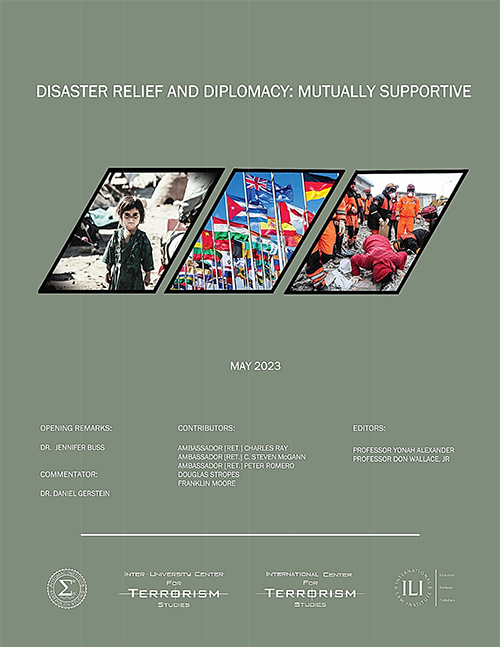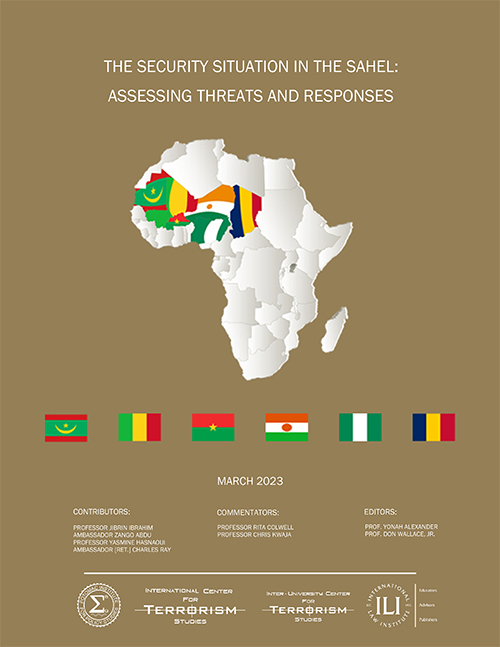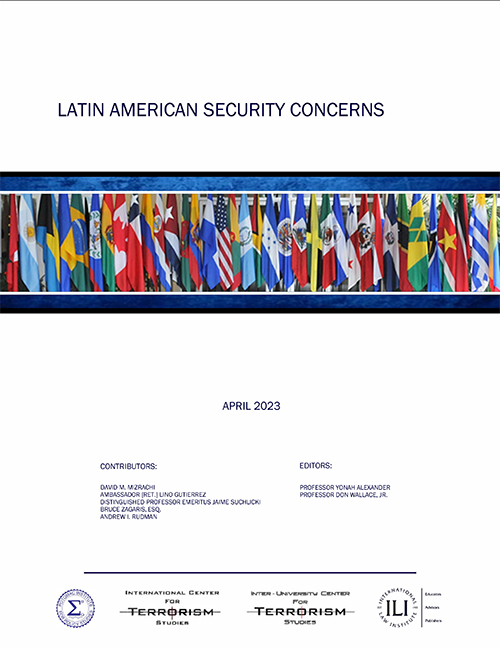Divisions
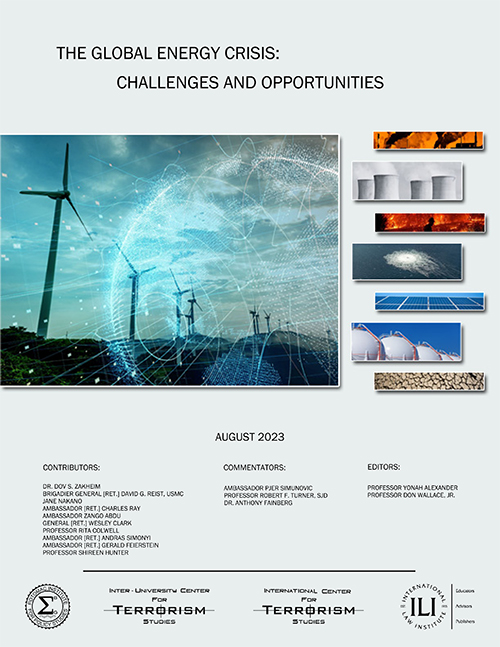 PROFESSOR YONAH ALEXANDER AND PROFESSOR DON WALLACE, JR. EDITORS
PROFESSOR YONAH ALEXANDER AND PROFESSOR DON WALLACE, JR. EDITORS
A popular English proverb provides an insightful lesson of history, “He that would know what shall be, must consider what hath been. Things present are judged by things past.” Indeed, a realistic assessment of permanent factors of domestic and international life entails consideration of factors such as the struggle of power within and among nations.
It is not surprising, therefore, that throughout recorded history national, regional, and global energy security interests and concerns required a critical focus that is expanding with every passing year. Thus, interdisciplinary published and unpublished literature reveals infinite lists of relevant terms, concepts, trends, consequences, costs, and impacts on societies past, modern, and even, to the minds of some, predictable glimpses of thousands of years hence.
This extensive lexicon brings to mind topics such as artificial intelligence, business, coal, crime, cyber, diplomacy, disasters, economy, environment, gas, leadership, media, military, nuclear, peace, propaganda, science, solar, strategy, terrorism, and war.
By June 2023, these energy-related topics have grown substantially both at home and abroad. For example, in North America frequent storms in the state of Texas, have caused the Electric Reliability Council of Texas to ask residents to cut power consumption and turn up their thermostats amid rising temperatures. This has been a growing concern in Texas, as its power grid is largely cut off from the rest of the U.S.i
Colombia’s Ecopetrol is sustaining sales to Asia at about 45% of its crude oil production even with the competition from Russian oil forcing it to offer deeper discounts.ii
In Africa, cheap contraband petrol from Nigeria abruptly doubled in price. This caused black market fuel vendors’ and commercial drivers’ businesses to collapse in Cameroon, Benin, and Togo.iii
In Europe, Germany’s energy prices have surged. Some companies are considering leaving the country altogether. Russia’s invasion of Ukraine continues to affect the rising increase of energy prices across Europe.iv
China’s fulfillment of its green energy targets for 2030 looks to be five years ahead of schedule, but coal plants are increasingly being produced as a backup for new wind and solar farms. China’s increasing capacity to generate power from wind and solar could have a significant affect on limiting impacts of rising temperatures.v
Saudi Arabia’s Aramco and France’s TotalEnergies have been awarded Engineering, Procurement and Construction contracts for the $11 billion Amiral complex in Saudi Arabia. The award of the EPC contracts marks the start of construction work on the joint petrochemical expansion.vi
Australia’s government made a $66.35 million investment into the Waratah Super battery. The project is aimed at helping ease demands on the grid as the Eraring coal power plant is set to be decommissioned in 2025.vii
The Organization of the Petroleum Exporting Countries (OPEC) announced that global oil demand will rise to 110 million barrels a day in about 20 years, increasing the world’s oil demand by 23%.viii
An International Atomic Energy Agency (IAEA) mission stated that Croatia remains committed to addressing the challenges of managing its radioactive waste shortly after the Integrated Review Service for Radioactive Waste and Spent Fuel Management Decommissioning and Remediation (ARTEMIS) review team concluded a nine-day mission to Croatia.ix
With the upcoming UN climate talks in November 2023, representatives have argued for a plan to fight climate change by welcoming oil and gas companies to participate more fully in the talks, with energy use derived from fossil fuels accounting for more than two-thirds of global emissions.x
These random media reports and many thousands of previous instances have been continuously considered by contemporary scholars, professionals, and policy-makers.
As we have repeatedly learned from history, the two key causes of catastrophic disasters are “Mother Nature” and “man-made.” These twin permanent threats to humanity have brought grave security costs on political, social, economic, and strategic levels. Therefore, it is not surprising that every generation from antiquity to modern times has developed “best practices” to cope with selected current challenges as well as a need to avert or survive the next expected and unexpected national, regional, and global dangers.
More specifically, such tragedies include earthquakes, famine, and plagues. Thus, during early 2023, misfortunes have struck China, Turkey, and Sudan. Additionally, the death toll due to the raging Covid-19 pandemic has reached 6,922,654i as of May 1, 2023.
Similarly, technological failures such as leakages of nuclear power plants occurred in the United States, Japan, and Ukraine. Also, state and non-state actors have launched tragic terrorist operations, wars, and flights of refugees, at home and abroad. Will civilization survive ongoing and future human conventional and unconventional calamities?
PROFESSOR YONAH ALEXANDER AND PROFESSOR DON WALLACE, JR. EDITORS
One cannot fully understand the impact of rising terrorism in North Africa and the Sahel without looking back to numerous warning signs that exploded during the post-WWII period. Thus, one tragic historical lesson relates to the December 21, 1988, mid-air explosion of Pan Am Flight 103 over Lockerbie, Scotland, perpetrated by a Libyan state-sponsored operation. It resulted in the death of 270 passengers, mostly Americans. Although Muammar Gaddafi’s 42 years of dictatorship were replaced by a new Tripoli regime in 2011, Libyan terrorism is alive and well. This brutal reality was graphically illustrated by the killing of four U.S. government personnel, including Ambassador John Christopher Stevens, in Benghazi on September 11, 2012. In fact, several days after this attack, a Libyan preacher during a Friday sermon called on the faithful to “detonate our wrath upon them” and “stab them in their main artery.”1
Therefore, it is not surprising that the Inter-University Center for Terrorism Studies (IUCTS), in cooperation with its academic partners such as the George Washington University, the Potomac Institute for Policy Studies, the International Law Institute, and other institutions in the U.S., Africa, Asia, and elsewhere have developed interdisciplinary educational programs focusing on security challenges in the Maghreb—Algeria, Libya, Mauritania, Morocco, and Tunisia—as well as adjacent areas such as Chad, Mali, Niger, Nigeria, and their regional and global strategic implications.
More specifically, our latest academic work has included a number of publications. The first on, “Why the Maghreb Matters: Threats, Opportunities & Options for Effective U.S. Engagement in North Africa” was published by the Potomac Institute for Policy Studies and the Conflict Management Program at the John Hopkins University School of Advanced International Studies on March 31, 2009. This initial work was guided by a bipartisan panel, including former Secretary of State Madeleine Albright, General (Ret.) Wesley Clark, Ambassador (Ret.) Stuart Eizenstat, Professor William Zartman, and other distinguished former officials and academics. The panel recommended more effective engagement in the region to prevent a brewing security crisis from erupting there.
Another following report is, “Terrorism in North Africa and the Sahel in 2015” that was authored by Yonah Alexander and published in March 2016. This work drew similar conclusions, thereby underscoring the pessimistic reality that the region is engaged in a generational socio-cultural conflict that impacts the global community. Indeed, events continue to point to a growing “arc of instability” across the region, with consequences beyond any country’s borders.
Additionally, in 2017, another study also authored by Yonah Alexander observed that focusing international attention on the region can help enable the seeds of conflict resolution, political accommodation, economic and social development, and national reconciliation to emerge and counter the forces of instability and chaos. The publication therefore recommended that, to be sustainable and effective, these solutions require an integration of global and local resolve as well as resources. Without an effective menu of responses to the challenges of terrorism and instability, these threats to the world community will only continue to grow.
The current March 2023 publication draws from the recent Zoom Forum titled, “The Security Situation in the Sahel: Assessing Threats and Responses” that was held virtually on November 2, 2022. It included the following distinguished invited speakers Professor Jibrin Ibrahim (Senior Fellow, Centre for Democracy & Development); Ambassador Zango Abdu (Country Manager, USIP Nigeria; Director, Sahel Institute for Strategic Studies); Professor Yasmine Hasnaoui (University Professor of Humanities & Political Science at the American International University, Kuwait); Ambassador (Ret.) Charles Ray (Former United States Ambassador to Cambodia and Zimbabwe); Professor Rita Colwell (Distinguished University Professor at Maryland and Johns Hopkins); and Dr. Chris Kwaja (Associate Professor of International Affairs at the Center for Peace and Security, Modibbo Adama University, Yola, Adamawa State, Nigeria). Deep appreciation is due to their exceptional contributions to the Forum.
Like any other world region, Latin America has faced two security challenges. The first stems from natural disasters, such as earthquakes and infectious diseases. The second consists of “man-made” threats including organized crime, terrorism, insurgency, and war triggered by internal and external adversaries.
Indeed, many factors have contributed to these dual security calamities. Aside from afflictions by Mother Nature, mention should be made of vulnerabilities created by porous borders; established smuggling routes; implementation at various times of Marxism, Leninism, Maoism, Castroism, fascism, and right-wing ideological models promoting dictatorships and military regimes; violating individual and collective human rights; weakening governmental institutions and the rule of law; sustaining corruption practices; and mismanaging scarce economic resources.
Some of the notable security-related concerns in Latin America several years prior to the Covid-19 pandemic include a landslide in Colombia that killed over 300 people; protests surrounding Venezuela’s Supreme Court ruling on the National Assembly’s power; Brazil’s Alcaçuz prison riot; an earthquake in Ecuador that killed over 650 people; and the assassination of a Mexico City mayor.
The security challenges in early 2023 are: Nicaragua’s canceled citizenship for 94 political opponents; an outbreak of dengue in Bolivia which killed 26 people; Ecuador being ranked as the least safe country in Latin America due to escalated gang violence, drug trafficking, and civil unrest; and in Peru, 48 citizens being killed as well as over 1,300 others injured while protesting the removal of President Pedro Castillo.
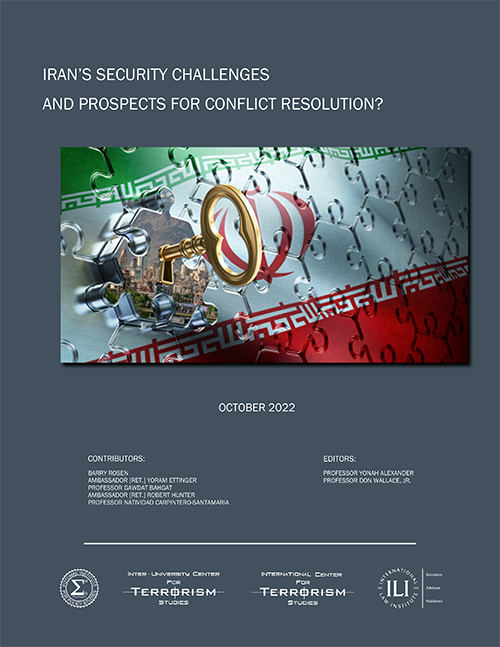 The rise of power in Iran of the Ayatollah Ruhollah Khomeini and the November 1979 seizure of the United States Embassy in Tehran and of some 60 American hostages by “revolutionary students” triggered a flurry of introspection in Washington concerning the policies which successive Administrations had followed with a country of enormous strategic and economic importance in the Middle East.
The rise of power in Iran of the Ayatollah Ruhollah Khomeini and the November 1979 seizure of the United States Embassy in Tehran and of some 60 American hostages by “revolutionary students” triggered a flurry of introspection in Washington concerning the policies which successive Administrations had followed with a country of enormous strategic and economic importance in the Middle East.
Among the questions that have been raised during that historical period were the following: What had gone wrong? Why had the United States failed to correctly assess the strength of the elements that brought down the Shah Shahanshah, King of Kings, Mohammed Reza Pahlavi in January 1979, after a 37-year rule? Why had the United States linked its fortunes so closely to those of the Shah in the first place? What did the national interests of the United States consist of as applied to Iran? What were the full implications of the transformation of Iran from a friendly ally to a hostile adversary of the United States?
These and related issues were analyzed in a study on The United States and Iran: A Documentary History, co- edited by Yonah Alexander and Allan Nanes and published by the University Publications of America in 1980. This work was prepared in association with the World Power Studies Program of the Center for Strategic and International Studies at Georgetown University.
During the next 43 years, extensive research efforts have been undertaken by the Inter-University Center for Terrorism Studies (IUCTS) and its academic partners such as the Potomac Institute for Policy Studies (PIPS) and the International Law Institute (ILI), focusing on Iran’s strategic and tactical intentions, capabilities, and actions. For instance, Tehran’s expanding terrorism role was discussed within the framework of the study, Terrorism: As State-Sponsored of Covert Warfare, co-authored by Ray S. Cline and Yonah Alexander and published by Hero Books in 1986.
This work was prepared in cooperation with the Center of Strategic and International Studies at the request of the Subcommittee on Security and Terrorism for the use of the Committee on the Judiciary of the United States Senate. The publication underscored the fact that the goal of psychological terror and physical violence employed by totalitarian dictatorships, like the Iranian regime, is to maintain control of their own people and to expand this kind of control over other regions and nations. In the face of Iran’s terrorism challenge, the United States, its friends and allies, particularly Israel, have developed a wide range of countermeasures. They consisted inter alia of intelligence, economic and security assistance, political and diplomatic pressures, economic sanctions, clandestine counter-terrorism infiltrations, covert and overt military operations.
Despite these activities, Tehran continued to resort to terrorism at home and abroad. Additionally, Iran’s apparent vision of a country becoming the dominant power in the Middle East had led its leadership to develop a nuclear program in open defiance of United Nations resolutions. In this connection, the IUCTS once again had conducted a major research project resulting in the release of a study on The New Iranian Leadership: Ahmadinejad, Nuclear Ambition, and the Middle East. This book, co-authored by Yonah Alexander and Milton Hoenig, was published by Praeger Security International in 2007. It documented Ahmadinejad’s background and rise to power and explained the structure of the Iranian Revolutionary government—the competing centers of power and the major players. The study then detailed the terrorist groups funded and armed by Iran, primarily Hizballah and Hamas. It also provided a comprehensive picture of Iran’s apparent aspirations to acquire nuclear weapons, as well as the related implications for regional and global security concerns.
Moreover, numerous seminars and conferences related to the multiple Iranian security challenges to the international community were held in the United States and abroad. For example, on December 6, 2011, a Forum was organized by the IUCTS on “Iran’s Nuclear Program: A Final Warning?” The event highlighted Tehran’s nuclear weapon program amidst the backdrop of an uncertain political reality in the Middle East.

